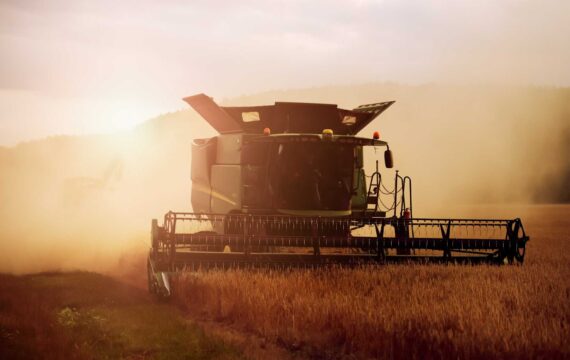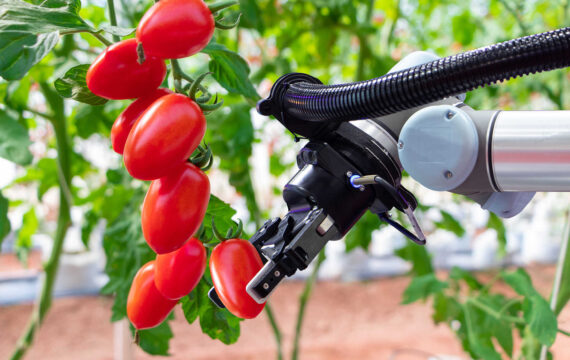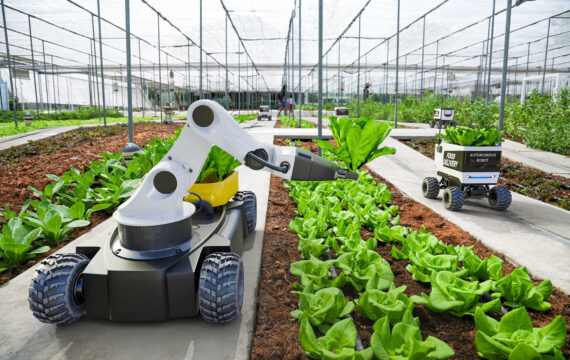Although farming is one of the world’s oldest professions, improvements in smart farming technology show that it hasn’t lost its importance. On the contrary, there are good reasons to say that global development will become increasingly dependent on farming in the coming decades to meet growing needs for nutritious foods. At the same time, artificial intelligence in farming technologies and IoT devices will help meet demands.
Looking at the dynamics of global population growth and changing international logistics in today’s fluid global economy, you’d be right to conclude that agribusinesses are challenged in unprecedented ways. Yet, there is some good news: smart farming helps agribusinesses tackle these challenges with sustainable solutions. Moreover, these solutions continue to become more valuable with the addition of AI and machine learning in agritech.
What’s inside this blog?
This blog will explore what smart farming is and how it’s changing agriculture. It includes:
- What is smart farming?
- Popular IoT solutions in agriculture
- Field and crop monitoring
- Automated irrigation
- Precision agriculture
- Precision livestock farming
- Smart greenhouses and vertical farms
- How Intellias enables smart farming
- Unified farm management system
- Automated greenhouse systems
- Smart farming in outer space
- The future of smart farming and sustainable agriculture
- FAQs
How does smart farming work?
Smart farming uses modern technology and big data analytics to improve the quality and quantity of agricultural products. It also helps make agricultural production less expensive and more efficient on and off the farm. Smart farming technologies include many different solutions. Your business needs will determine which solutions work best for you.

Common technology used for smart farming includes:
- IoT devices to track and manage soil condition, humidity, temperature, contamination levels and other parameters
- Connectivity technologies such as cellular, LoRa and Wi-Fi to transmit the data gathered in fields
- Software solutions developed in-house or by third-party vendors to process and analyze data from IoT devices
- Location tracking systems to control and navigate vehicles via GPS-based tools
- Robotics innovations to operate autonomous devices or agricultural drones
- Services to store, organize and analyze large volumes of data
- GenAI models to perform many tasks, like creating personalized marketing campaigns or identifying crop diseases
Using a combination of technology, agribusinesses can address ongoing challenges and ensure sustainability in the future. According to McKinsey, farmers are focusing heavily on solutions that improve operational efficiency and foster sustainability.
Advantages of smart farming
Smart farming techniques use AI, IoT and automation for more efficient, cost-effective and sustainable agribusiness practices. Real-time data from many sources help farming-related businesses make many improvements, like minimizing waste, optimizing crop yields and reducing operational risks. Remote monitoring of weather, soil, water and other conditions also improves productivity.

Practices are both sustainable and profitable in smart farming. For example, AI-powered solutions reduce pesticide and fertilizer use, predictive analytics find potential issues before they become a problem and automated systems for irrigation and greenhouse management ensure efficient use of water and energy.
Some of the benefits of smart farming include:
- Improved resource use: IoT sensors and AI-driven analytics reduce waste by precisely using water, fertilizer and pesticides
- Lower operational costs: Automation reduces manual labor, while predictive maintenance prevents equipment downtime
- Higher crop yields: AI tools and real-time monitoring improve plant health
- Sustainable farming practices: Smart systems eliminate chemicals, conserve water and reduce carbon footprints
- Early disease and pest detection: AI solutions identify threats before they spread to prevent large-scale damage and improve crop resilience
- More efficient supply chain: More data leads to better logistics planning that reduces post-harvest losses
Popular IoT solutions in agriculture
Many smart farming solutions, from precision agriculture and livestock farming to smart greenhouse automation using AI, get their data from IoT devices. Here’s a closer look at the main elements in an IoT-driven farming cycle.
IoT for field and crop monitoring
Field management starts by installing IoT devices throughout the farm – including inside vehicles and other machinery – to gather data smoothly and continuously. These devices collect information about livestock, crops, soil, water and machinery, and other field management variables. These data points are stored in a cloud-based farm management platform where they can be analyzed for areas of improvement. They also can be used to set up an alert and monitoring system. For example, when conditions fall outside certain parameters, a monitor could alert the field manager that action is required.

In other cases, an IoT platform can act autonomously. When events meet predetermined criteria, these platforms automatically act and begin the cycle again. Autonomous platforms are used when human intervention is unnecessary. They can reduce manual effort, which is the goal of smart farming technologies.
For example, autonomous IoT systems can help agribusinesses manage:
- irrigation
- lighting conditions
- crop spraying
- temperature
- humidity
In fact, a greenhouse increased its overall income by almost 20% by using in-field soil sensors. A network of integrated IoT systems that covers the entire vertical indoor farm powers the automation and measures real-time environmental parameters. These systems then send data to the cloud for quick and easy access. Once an issue is identified, the system can automatically correct the problem or notify someone for approval.
Smart irrigation systems
Smart irrigation uses data from IoT systems to determine the frequency and duration of watering cycles. For example, a GenAI-powered smart irrigation system collects weather forecasts from APIs. It then monitors soil moisture through smart sensors and checks the soil’s nutrient levels. GenAI then creates precise irrigation schedules. These systems adjust water flow dynamically to prevent over- or under-watering.
They also use predictive analytics to set the schedules. For example, if weather monitoring stations forecast an incoming rainstorm, sensors reduce or pause irrigation to conserve water. If the systems predict a drought, they gradually increase watering to prevent crop stress. Once fine-tuning is complete, the systems conserve resources and increase yield efficiency with minimal human intervention.
Precision agriculture as a means for intelligent farming
Precision agriculture, or precision farming for sustainable agriculture, is a broad category of diverse IoT-based smart farming solutions that manage agriculture and livestock with greater control and accuracy. While traditional farming approaches rely on a field as the major management unit, precision agriculture manages irrigation per square meter or even for a single plant or animal.
While it may be cost-prohibitive to cover an entire farm with sensors, the benefits of using precision agriculture generally outweigh the cost of the new technology. This is especially true if it helps farmers buy and use precise quantities of pesticides and fertilizers.

Precision agriculture solutions also let farmers define and choose the scope and size of the smallest farm management unit. They can compare grain varieties or test new fertilizers in a safe environment without risking the entire field.
Precision livestock farming
Like precision agriculture, precision livestock farming lets farmers treat every animal independently. For example, precision livestock farming can help identify diseases early. The IoT devices measure food consumption and take photos of the animal’s physical health. With the help of AI-powered image identification, the solution then determines when individual animals are sick. Farmers receive a notice that lets them know about the diseased animal so they can isolate it and prevent the spread of the disease. With more data from additional IoT devices, intelligent livestock farming gets even more accurate. Farmers manage animals more efficiently than as a single herd.
Smart greenhouses and vertical farms
Traditional greenhouse practices take a manual approach to water management that is inefficient and wasteful. However, smart greenhouse systems manage water by automatically analyzing data from many sensors throughout the greenhouse and running irrigation systems at the most efficient levels possible.
For example, in traditional systems, greenhouse managers might determine if additional spraying or irrigation is needed based on the humidity level on the hygrometer in one part of the greenhouse. But this approach is not efficient. Because humidity changes throughout the day, determining the amount of water with a single data point might lead to incorrect conclusions. Furthermore, humidity in one part of the greenhouse might be more or less than the rest, which means that each part of the greenhouse would have different water needs.
Finally, changing one of the data points might affect the other data points. In this case, over or underwatering one part of the greenhouse could change the humidity in other parts. As a result, the environment’s integrity is compromised, and humidity measurements become meaningless. The irrigation system uses energy unnecessarily and becomes vulnerable to human mistakes.
How Intellias enables smart farming
Intellias helps agricultural businesses get more value from their data. We’ve created many solutions for smart farming.
Unified farm management system
In one case, Intellias collaborated with a farm management software developer to create a unified farm management system. The system provides real-time visibility of farming operations by combining all on-field data into one platform. It automates the management of field operations and production processes from seeding to harvesting.
The system includes a crop rotation chart with an analysis histogram that helps farmers plan the sequence of crops to improve soil fertility. It also helps them with crop management and provides detailed weather forecasts. Farmers can use these to prepare for adverse weather systems or to minimize pests. The platform also supports GIS-based farm record-keeping. This lets farmers manage field operations, agricultural property and yields.
The integration of these features in the unified farm management system increases productivity and profitability.
Smart greenhouse automation
Intellias also partnered with an AgriTech advisory company to develop an automated greenhouse system to assist growers in Europe, Africa and the Middle East (EAME). The system includes a web-based application that aggregates greenhouse data. It helps greenhouse managers get faster and more accurate growing recommendations.
The system gathers comprehensive details about the greenhouse and its climate conditions, including:
- Seeding dates
- Morning and afternoon data measurements
- Daytime and nighttime temperatures (inside and outside)
- Humidity, moisture and CO₂ levels
- Light efficiency and sun radiation effects
- Soil conditions, watering and drainage measurements
- Plant health and maturity assessments
Greenhouse managers can access, visualize and analyze the data from within the web application to monitor greenhouse conditions effectively. They can also review reports and histograms generated by the system to get actionable growing recommendations.

Automating data collection and analysis reduces manual labor. It also allows for faster responses to issues affecting crop health. Greenhouse managers get higher crop yields and more efficient greenhouse management systems to address the specific needs of growers in regions with challenging climate conditions.
Smart farming in outer space
Sometimes, Intellias systems are out of this world. We worked with a manufacturer of smart lighting systems to develop a smart vertical farm lighting and monitoring solution. NASA uses the system to research plant cultivation and food production in space. It also gives mission crews fresh produce.
UI/UX design of a vertical farming lighting system
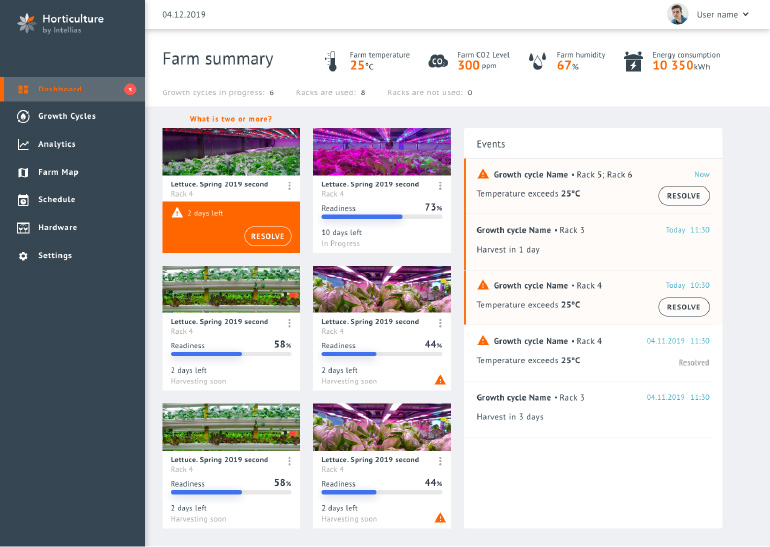
This solution gives growers real-time data on farm conditions, including temperature, humidity and ventilation. AI algorithms analyze the information to adjust lighting and optimize plant growth. In a 100% controlled environment, the vertical farm cuts energy costs by 60% and lets farmers continuously monitor the crops.
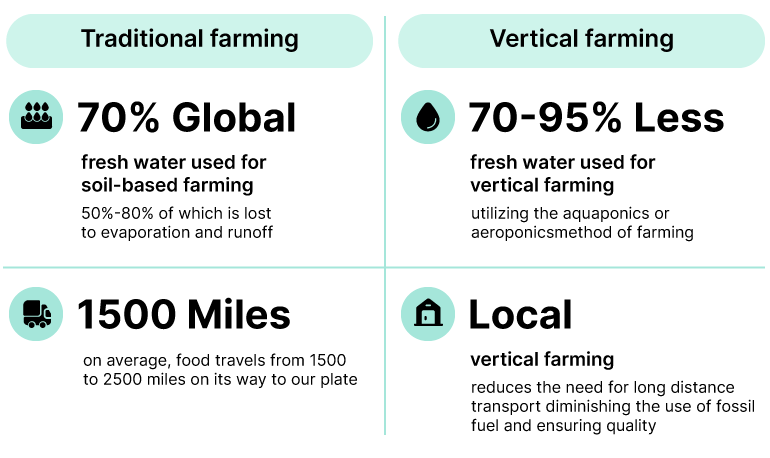
Designed for versatility, the lighting system works at vertical farms on skyscraper rooftops, those built in extreme weather conditions and even vertical farms in outer space. Furthermore, farm managers can experiment with cultivation cycles and fine-tune growing conditions to maximize yields and shorten time to harvest.
Vertical farms reduce transportation needs, cut carbon emissions, lower food prices, minimize the risks of disease and pests and eliminate agrochemicals. They also reduce global food waste. Over 40% of produce perishes during transport, while 870 million people lack reliable access to food. With year-round operation, regardless of season or climate, a vertical smart farm solution helps create a more sustainable and efficient food system.
The future of smart farming
New technology is undeniable in the future of agriculture as are smart farming benefits. Overcoming challenges in smart farming adoption includes choosing the right combination of services and tools for a successful outcome. As the need for more sustainable farming and nutritious foods continues to grow, these smart solutions to agriculture’s problems will become even more important to the success of agribusinesses.
Contact us to learn how to implement smart farm solutions to help your agribusiness meet global food challenges and grow sustainably.

